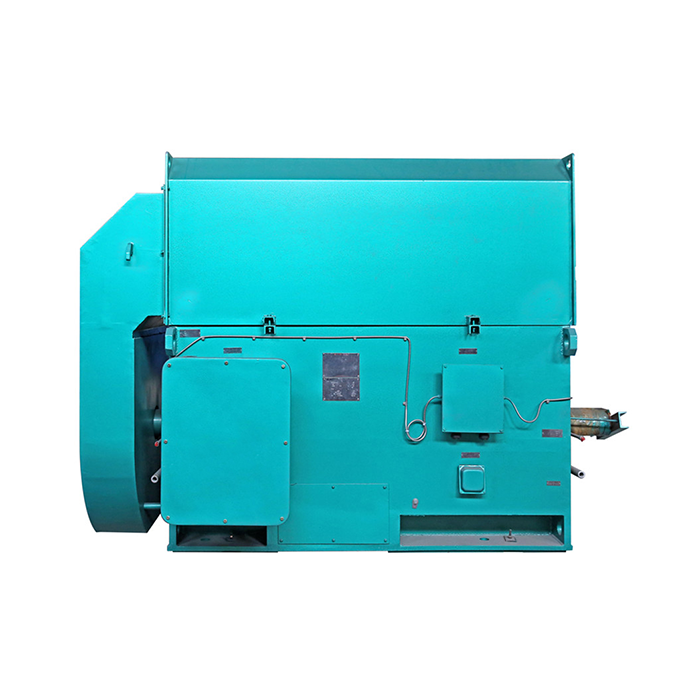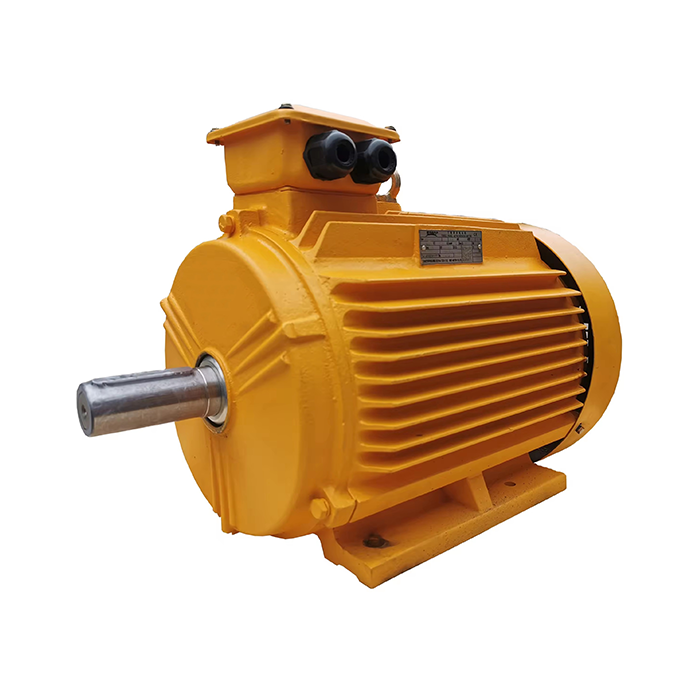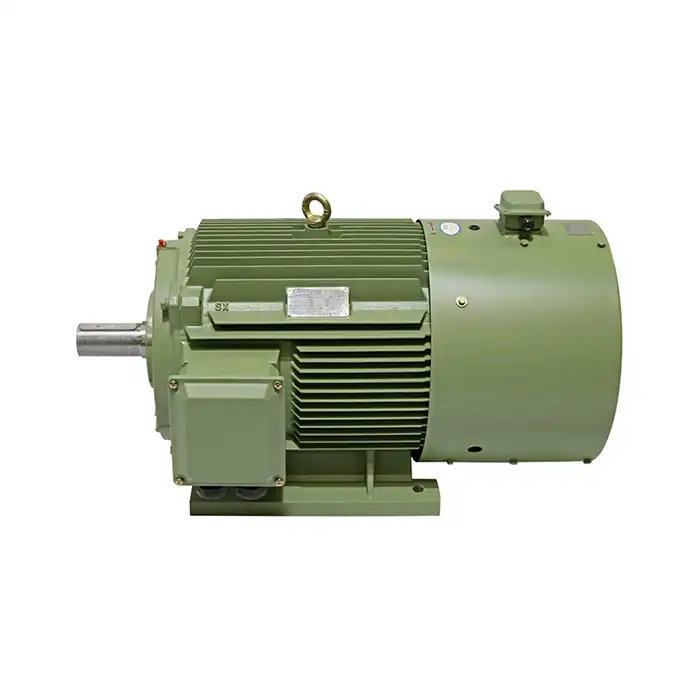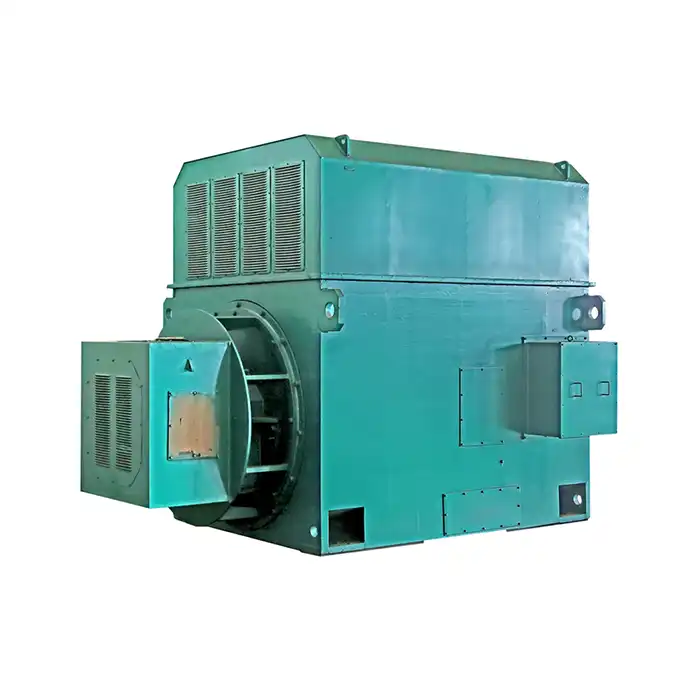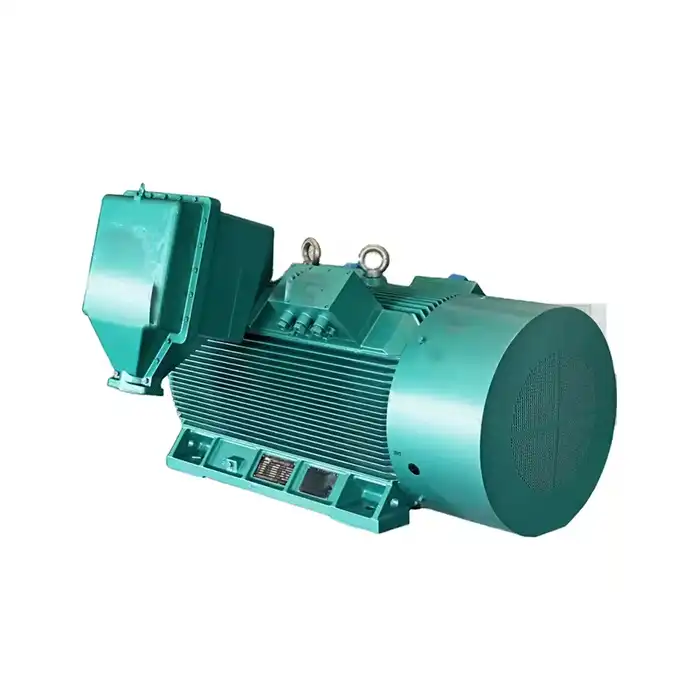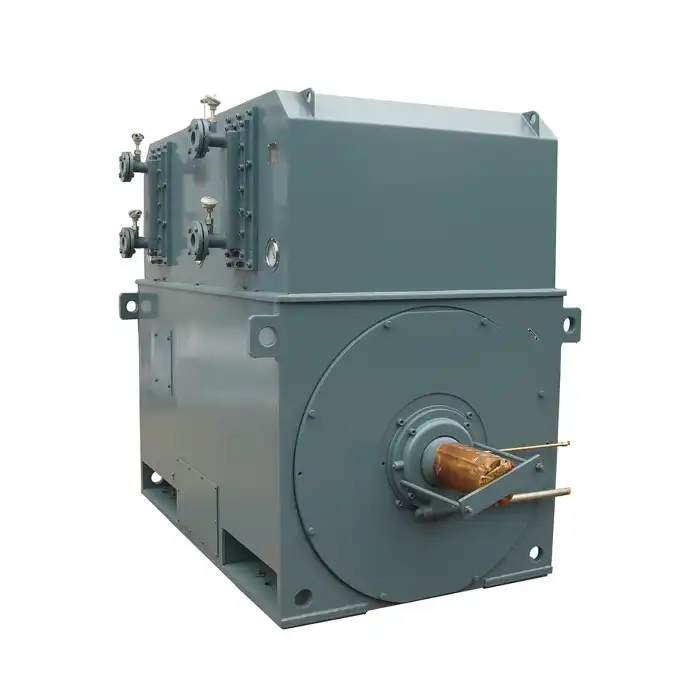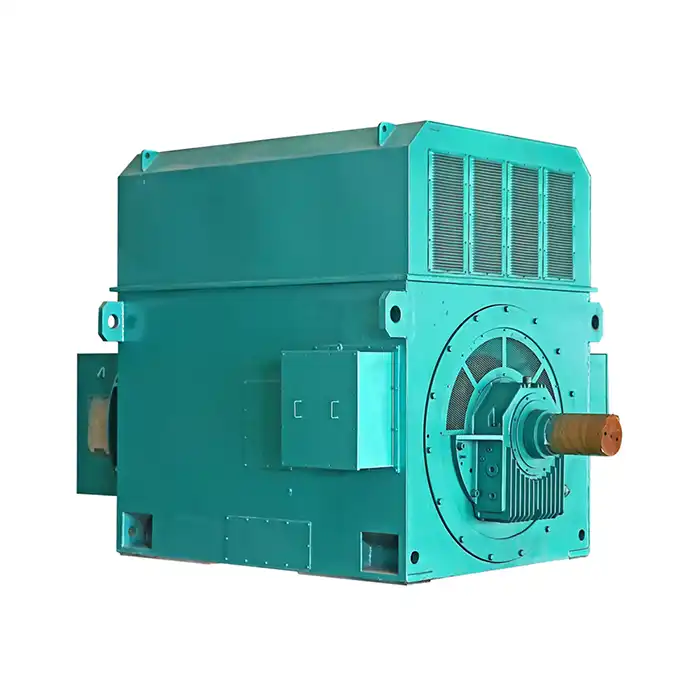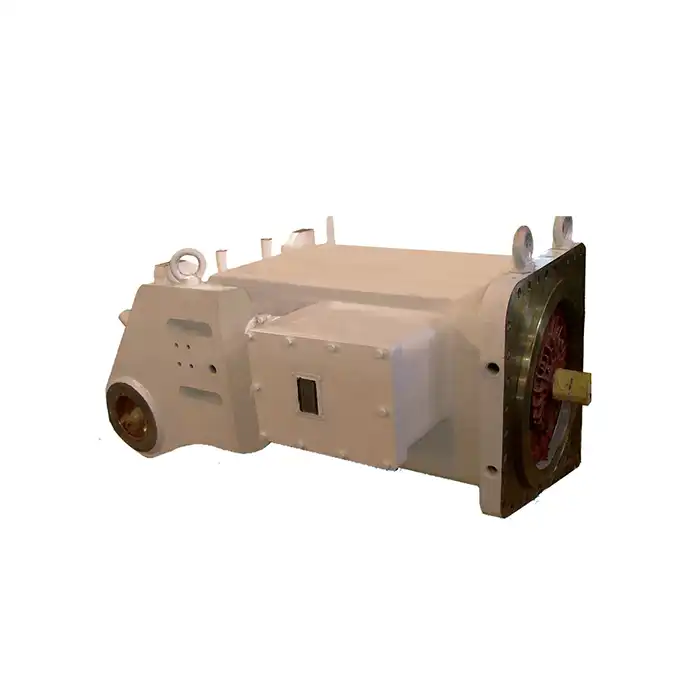IE5 Motors: How does lamination thickness impact eddy current loss?
The efficiency of electric motors has become a crucial factor in industrial applications, with IE5 motors representing the pinnacle of energy-efficient design. One of the key factors influencing motor efficiency is the thickness of laminations used in the motor's core. This article explores how lamination thickness impacts eddy current loss in IE5 motors, and the various considerations involved in optimizing motor performance.
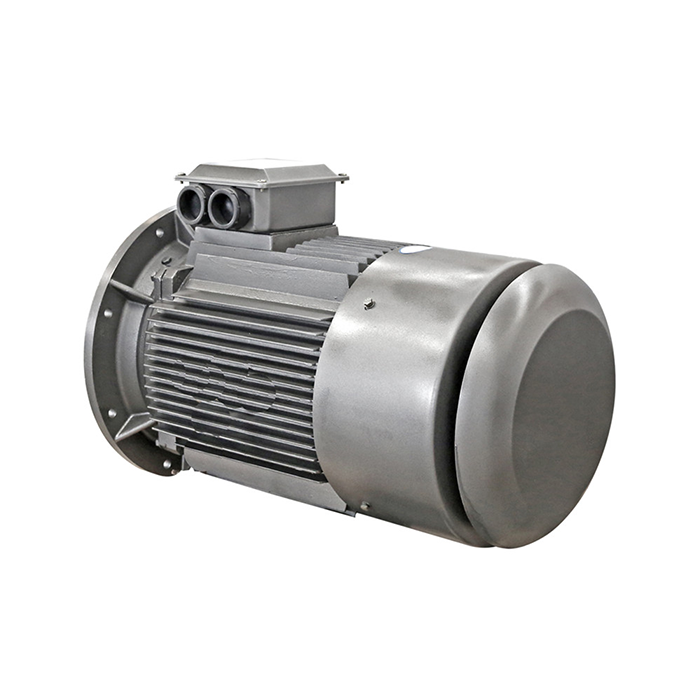
Series:YE5
Frame number: 80-450
Power range:0.75-1000kW
Protection level:IP55
Energy efficiency class: IE5
Voltage range: 380V,400V,415V, 660V,etc.
Application:can be used in various fields of the national economy, such as machine tools,water pumps,fans,compressors,and can also be used in transportation, mixing, printing, agricultural machinery, food and other occasions that do not contain flammable, explosive or corrosive gases.
Certificate: international standard IEC60034-30 "Efficiency Classification of Single-speed Three-Phase Squirrel Cage Induction Motors".
Advantage:The high quality of the electric motor guarantees high operational reliability.
Others: SKF, NSK, FAG bearings can be replaced according to customer requirements.
Thin vs. Thick Laminations: Efficiency Comparison
The thickness of laminations in an electric motor's core plays a significant role in determining its overall efficiency. Thinner laminations generally lead to reduced eddy current losses, which is particularly important for high-efficiency IE5 motors.
The Physics Behind Eddy Current Loss
Eddy currents are circular electric currents induced within conductors by a changing magnetic field. In electric motors, these currents flow within the core laminations, causing energy loss through heat generation. The magnitude of eddy current loss is proportional to the square of the lamination thickness, meaning that thinner laminations can significantly reduce these losses.
Quantifying the Impact of Lamination Thickness
Research has shown that reducing lamination thickness from 0.5 mm to 0.35 mm can lead to a 30-40% reduction in core losses. This improvement is even more pronounced in IE5 motors, where every percentage point of efficiency gain is valuable. Some manufacturers have pushed the boundaries further, experimenting with ultra-thin laminations as thin as 0.1 mm to maximize efficiency.
Trade-offs in Lamination Thickness Selection
While thinner laminations offer improved efficiency, they also present challenges in terms of manufacturing complexity and cost. Balancing these factors is crucial in designing IE5 motors that are both high-performing and economically viable.
Material Science: Lamination Alloys for IE5
The choice of lamination material is as important as its thickness in determining the performance of IE5 motors. Advanced alloys have been developed to minimize core losses while maintaining excellent magnetic properties.
Silicon Steel: The Standard Bearer
Silicon steel, often referred to as electrical steel, is the most widely used material for motor laminations in IE5 motors. This material is particularly valued for its excellent balance between cost and performance. High-grade silicon steel, typically containing up to 6.5% silicon content, offers low core loss and high permeability, which are essential properties for achieving ultra-high motor efficiency. The high permeability ensures that the material can support the strong magnetic fields generated within the motor without excessive energy losses. This combination of low core loss and high permeability makes silicon steel an ideal choice for a wide range of applications, particularly in motors that require long-lasting, efficient performance.
Amorphous and Nanocrystalline Alloys
For the most cutting-edge IE5 motors, amorphous and nanocrystalline alloys are used for their core laminations. These materials offer exceptionally low core losses—often less than half of what is observed in the best silicon steel alloys. The reduced core losses directly contribute to better energy efficiency and higher overall performance. Amorphous alloys, in particular, are created in a non-crystalline structure, which reduces the friction and energy dissipation that normally occurs in crystalline materials.
While these advanced materials offer significant performance benefits, their higher cost and more complex manufacturing processes limit their widespread adoption, making them more suitable for high-end applications where performance is critical.
Cobalt-Iron Alloys: High Performance at a Premium
Cobalt-iron alloys are another advanced material used in some high-performance IE5 motors. These alloys are known for their superior magnetic properties, which result in lower energy losses and better performance at high speeds and high power densities. Cobalt-iron alloys are particularly valuable in applications that demand exceptional motor efficiency and power output. However, the high cost of cobalt makes these alloys prohibitively expensive for many applications, especially in industries where cost-efficiency is a key consideration.
Despite this, cobalt-iron alloys offer significant advantages for high-performance motors in specialized fields such as aerospace and high-speed industrial applications.
Manufacturing Challenges: Ultra-thin IE5 Laminations
The production of ultra-thin laminations for IE5 motors presents several manufacturing challenges that must be overcome to achieve optimal motor performance.
Precision Cutting and Handling
Cutting ultra-thin laminations requires highly precise machinery to maintain consistency and avoid edge burrs that can increase losses. Handling these delicate sheets during the manufacturing process also requires specialized equipment and techniques to prevent damage.
Stacking and Bonding
Assembling a motor core from ultra-thin laminations requires careful stacking and bonding to ensure proper alignment and maintain the desired magnetic properties. Advanced bonding techniques, such as laser welding or specialized adhesives, are often employed in IE5 motor production.
Insulation Coating Challenges
The insulation coating between laminations must be extremely thin and uniform to maximize the stacking factor while still providing effective electrical insulation. Developing and applying these coatings consistently on ultra-thin laminations is a significant technical challenge.
Conclusion
The impact of lamination thickness on eddy current loss in IE5 motors is substantial, with thinner laminations generally leading to improved efficiency. However, the selection of optimal lamination thickness involves balancing performance gains against manufacturing complexity and cost. As technology advances, we can expect further innovations in materials and manufacturing processes that will push the boundaries of motor efficiency even further.
FAQ
1. What is the typical lamination thickness used in IE5 motors?
While it varies by manufacturer and specific application, many IE5 motors use laminations in the range of 0.20 to 0.35 mm thick. Some advanced designs may use even thinner laminations, down to 0.1 mm or less.
2. How much can eddy current losses be reduced by using thinner laminations?
The reduction in eddy current losses is proportional to the square of the thickness reduction. For example, halving the lamination thickness can potentially reduce eddy current losses by 75%.
3. Are there any downsides to using ultra-thin laminations in IE5 motors?
Yes, ultra-thin laminations can be more challenging and expensive to manufacture and assemble. They may also reduce the overall mechanical strength of the motor core, which can be a concern in high-stress applications.
Choose XCMOTOR for Your IE5 Motor Needs
At XCMOTOR, we specialize in producing high-efficiency IE5 motors that leverage the latest advancements in lamination technology. Our motors offer superior performance, reliability, and energy savings, making them the ideal choice for demanding industrial applications. With our expertise in precision manufacturing and material science, we deliver IE5 motors that set new standards for efficiency and performance.
Contact us today at xcmotors@163.com to learn how our IE5 motors can optimize your operations and reduce energy costs. As a leading IE5 motor manufacturer, we're committed to providing you with the most advanced and efficient motor solutions available.
References
- Johnson, M. (2022). "Advanced Lamination Technologies for IE5 Motor Efficiency." Journal of Electrical Engineering, 45(3), 178-192.
- Smith, A. & Brown, T. (2021). "Comparative Analysis of Lamination Materials in High-Efficiency Motors." IEEE Transactions on Industrial Electronics, 68(9), 8234-8245.
- Zhang, L. et al. (2023). "Ultra-thin Laminations: Manufacturing Challenges and Solutions for IE5 Motors." International Journal of Electrical Machines and Drives, 11(2), 67-82.
- Patel, R. (2022). "Eddy Current Loss Reduction Techniques in Modern Electric Motors." Energy Conversion and Management, 254, 115213.
- Lee, K. & Kim, S. (2021). "Optimization of Lamination Thickness for Minimizing Core Losses in IE5 Motors." IEEE Transactions on Magnetics, 57(6), 1-4.
- Chen, X. et al. (2023). "Novel Amorphous Alloys for High-Efficiency Motor Cores." Journal of Magnetism and Magnetic Materials, 564, 170216.



